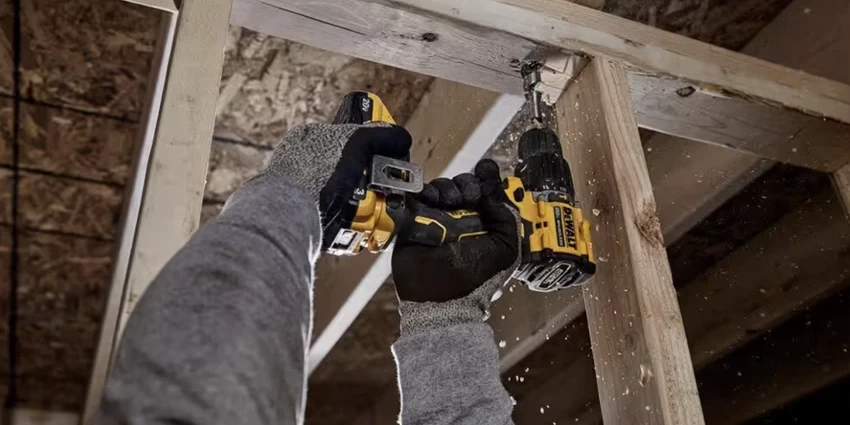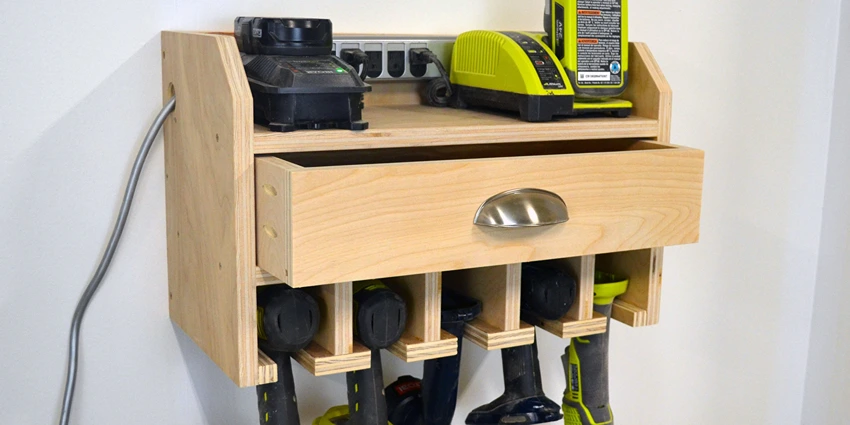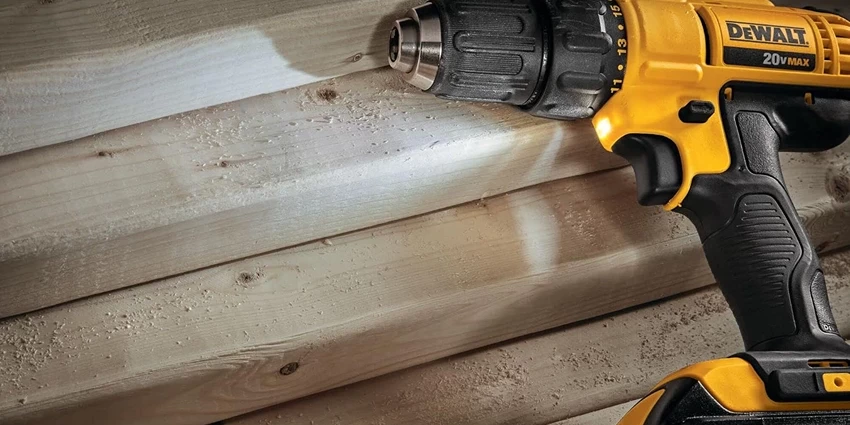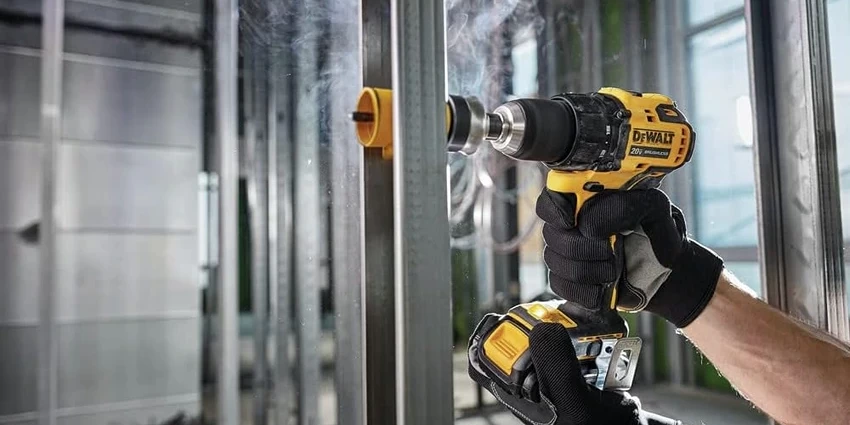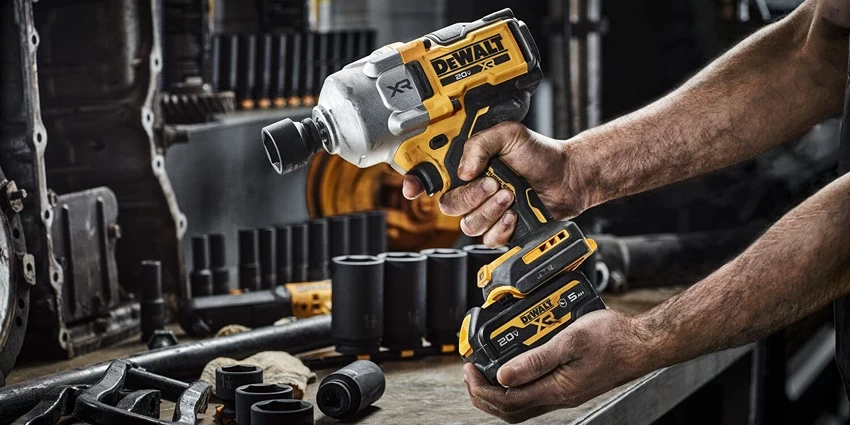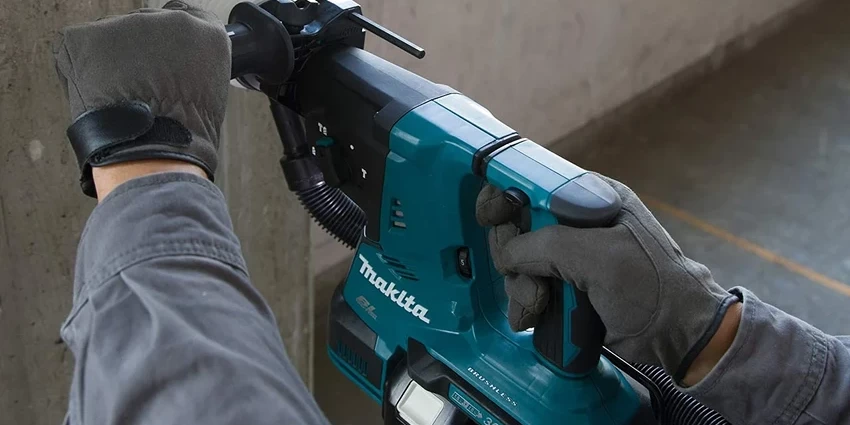All products were chosen independently by our editorial team. This review contains affiliate links and we may receive a commission for purchases made. Please read our affiliates FAQ page to find out more.
Home » Cordless Drills » The Ultimate Guide to Buying a Cordless Drill in the UK
In today’s fast-paced world, the cordless drill has become an indispensable tool for both DIY enthusiasts and professionals. Its evolution from a bulky, corded device to a sleek, powerful tool has revolutionized how we tackle projects, making tasks quicker and more efficient. Whether you’re assembling furniture, building a deck, or hanging pictures, the right cordless drill can make all the difference. This guide aims to navigate the vast sea of options available in the UK market, ensuring you find the perfect drill for your needs.
Key Takeaways
- Types of Cordless Drills: Understand the differences between drill drivers, impact drivers, and hammer drills to choose the right one for your project.
- Key Features to Consider: Look for power and voltage, battery life, chuck size, and speed and torque settings when selecting a drill.
- Advanced Features and Technologies: Consider drills with brushless motors and smart technology for enhanced performance and durability.
- Ergonomics and Safety: Choose a drill with a comfortable design and safety features to prevent strain and accidents.
Understanding Cordless Drill Basics

Types of Cordless Drills
The cordless drill market is diverse, with each type designed for specific tasks:
- Drill Drivers: Ideal for drilling holes and driving screws in wood, metal, and plastic. They are versatile and a must-have for general DIY projects.
- Impact Drivers: Best for driving large fasteners and long screws with minimal effort. They deliver high torque and are perfect for construction projects.
- Hammer Drills: Designed for drilling into concrete and masonry. They combine rotation with a hammering action to penetrate hard materials.
Key Features to Consider
When shopping for a cordless drill, several features stand out as essential for optimal performance:
- Power and Voltage: The drill’s voltage indicates its power. Models range from 12V (suitable for light tasks) to 18V and 20V (ideal for heavier-duty projects).
- Battery Life and Type: Lithium-ion batteries are preferred for their long life and fast charging. Consider the battery’s ampere-hour (Ah) rating, which indicates how long it can last on a single charge.
- Chuck Size: The chuck holds the drill bit in place. A 10mm chuck is sufficient for most home projects, while a 13mm chuck is better for heavier tasks.
- Speed and Torque Settings: Adjustable settings allow you to control the drill’s speed and torque, making it versatile for different materials and tasks.
Choosing the Right Cordless Drill
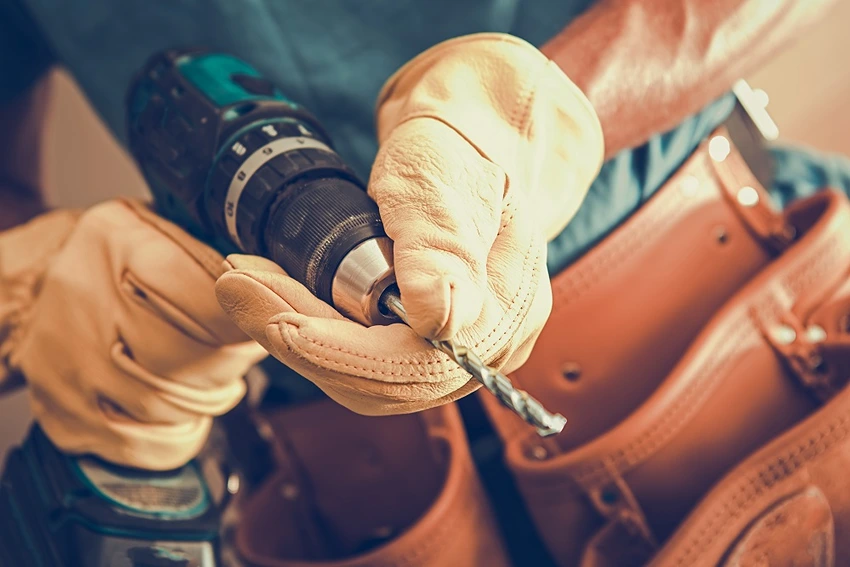
How to Choose the Right Cordless Drill for Your Needs
Selecting the right cordless drill involves assessing your project requirements and understanding the specifications that match those needs. Here’s a table to help you decide:
| Project Type | Recommended Drill Type | Voltage | Key Features |
| Light DIY tasks | Drill Driver | 12V | Adjustable speed, lightweight |
| Heavy-duty construction | Impact Driver | 18V-20V | High torque, durable design |
| Drilling into concrete | Hammer Drill | 18V-20V | Hammer action, high power |
Advanced Considerations
Advanced Features and Technologies
Modern cordless drills come equipped with advanced features that enhance their performance and user experience:
- Brushless Motors: These motors are more efficient, produce less heat, and offer a longer lifespan than traditional brushed motors.
- Smart Drills and Connectivity: Some high-end models feature Bluetooth connectivity, allowing you to customize settings and monitor the drill’s performance through a smartphone app.
Ergonomics and Safety
A drill’s design can significantly impact its ease of use and safety:
- Design and Comfort: Look for a drill with a comfortable grip and balanced weight distribution to reduce fatigue during extended use.
- Safety Features: Features like automatic shut-off and overload protection can prevent accidents and extend the life of your drill.
Maintenance and Care
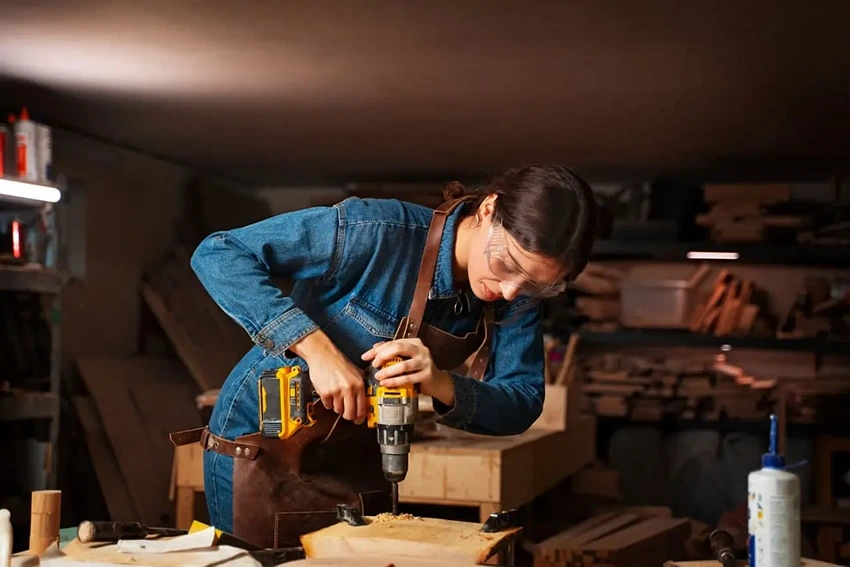
Maintaining Your Cordless Drill
Proper maintenance ensures your cordless drill remains in top condition for years to come. Here are some tips:
- Battery Care: To maximize battery life, avoid leaving it on the charger after it’s fully charged. Store batteries in a cool, dry place.
- Cleaning and Storage: Keep the drill clean and store it in a dry, dust-free environment. Regularly check and tighten any loose parts.
Advanced Features and Technologies
Innovations in cordless drill technology have introduced features that enhance performance, convenience, and safety. Here’s a closer look at some of these advancements:
| Feature | Benefits |
| Brushless Motors | More efficient, longer battery life, less maintenance |
| Smart Technology | Customizable settings, performance tracking, enhanced control |
Ergonomics and Safety
The design of a cordless drill impacts not only comfort but also safety. Ergonomic features to look for include:
| Design Aspect | Importance |
| Comfortable Grip | Reduces fatigue and increases control |
| Balanced Weight | Prevents strain and improves precision |
| Safety Features | Protects the user and the tool from damage |
Register for our latest in-depth reviews and product round-ups from the experts.
Enter your email address below to receive our monthly review emails.
By entering your details, you are agreeing to our terms and conditions and privacy policy. You can unsubscribe at any time.
Frequently Asked Questions
The best voltage for a cordless drill depends on your specific needs. For light-duty tasks such as screwdriving and small drilling jobs, a 12V drill is sufficient. For more demanding projects that require drilling into harder materials or using larger bits, an 18V or 20V drill offers the power and endurance needed.
To extend the battery life of your cordless drill, follow these tips:
- Avoid overcharging the battery; remove it from the charger once it’s fully charged.
- Use the battery regularly to prevent it from becoming dormant.
- Store the battery in a cool, dry place when not in use.
- Keep the battery clean and free from dust and debris.
Yes, you can use a cordless drill for concrete, but you’ll need a hammer drill with a masonry bit. Hammer drills are specifically designed to drill into concrete and masonry by combining rotary drilling with a hammering action to break through the material.
The main differences between brushless and brushed drills are efficiency, maintenance, and lifespan. Brushless drills have motors that are more efficient, require less maintenance, and have a longer lifespan because they don’t have brushes that wear out. Brushed drills are typically less expensive but may require more maintenance and have a shorter lifespan due to brush wear.
Eleanor is the quintessential spirit of the British gardener — passionate, dedicated, and endlessly curious about the natural world. Born and raised amidst the verdant landscapes of the Cotswolds, she developed an early love for the outdoors, often spending hours in the family garden with her hands buried in the soil, nurturing every type of plant she could find.



